What is sales promotion?
A sales promotion is a powerful technique marketers leverage to increase interest or demand for a product or service over a short period.
It includes tactics like birthday promotions, free trials, and limited-time free shipping offers to create a connection with customers and stimulate immediate purchases.
Unlike advertising, which seeks to build long-term brand awareness, sales promotions are designed to prompt immediate customer action.
A 2022 survey by Statista revealed that more than one-third (34%) of U.S. consumers preferred immediate percentage discounts as a promotional mechanism. Cash discounts ranked second, followed by free items for a given value.
These sales promotion techniques are of various forms, such as discounts, giveaways, contests, and more, all intended to encourage consumers or businesses to make quick purchasing decisions.
These techniques, when applied effectively, not only increase sales but also offer numerous business benefits.
Why sales promotions matter for your business?
Below are the most obvious reasons that persuade a business to run promotions:
Drive sales and revenue
Sales promotions are a quick way to boost revenue and clear inventory. For example, end-of-season sales make space for new stock and help retailers meet quarterly goals.
A well-executed consumer sales promotion like discounts or freebies can quickly attract new customers and drive sales.
Make product launches successful
A well-planned sales promotion can make a new product launch stand out. For instance, an introductory discount or free trial motivates potential customers to try it without any heavy sales pitch.
Create customer loyalty
Promotional tactics like loyalty programs or referral rewards show customers you value them.
A perfect example of this is Domino's 'Emergency Pizza' campaign, which gave its loyal customers a free pizza, building trust and encouraging repeat orders.
Maximize brand visibility
Promotional activities like year-end discounts and flash sales grab attention, especially when marketed on digital channels. These limited-time offers attract potential buyers and drive more traffic to your site.
Streamline inventory management
Promotional deals like “buy one, get one free” or "buy one, 20% & buy two 50%" are great tactics to move unsold products, trim inventory costs, and make room for new ones.
Apparel brands often slash prices by up to 70% during clearance sales to keep their shelves current. Other industries like electronics or home goods also use these tactics to manage seasonal stock efficiently.
Ultimately, sales promotions are essential for meeting business objectives while fostering strong customer relationships.
Different types of sales promotion campaigns that businesses can do
Sales promotions are as diverse as the businesses that use them. Let's break down the main types:
| Type | Description | Examples |
| Consumer promotions | Target end-users with incentives to purchase. | Coupons, free samples, BOGO offers |
| Trade promotions | Encourage retailers, distributors, or wholesalers to stock and sell your products. | Trade discounts, In-store displays, Bulk deals |
| Digital promotions | Leverage online platforms to drive sales and engagement. | Flash sales, Email campaigns, Social giveaways |
| Experiential promotions | Create memorable, hands-on customer experiences. | Contests, Giveaways, Pop-up Events |
Note that deciding which sales promotion tactic works best for your product or service is an important step when planning a campaign.
Consumer promotions like coupons or free samples can help generate quick interest if you want to attract customers. Trade promotions, such as bulk discounts, work well for building strong relationships with retailers for building strong relationships with retailers.
Digital promotions, like flash sales or social media giveaways, are ideal for reaching your target audience online. In contrast, experiential promotions, like contests or pop-up events, are great for creating memorable experiences.
Aligning the promotion type with your goals ensures better results and helps meet market demand effectively.
Unlock the power of personalized marketing
Download Salesmate's free buyer persona template and craft campaigns that truly resonate with your audience.
Let's move to some of the best sales promotion examples run by top businesses.
10 Effective sales promotion examples to inspire your next campaign
Sales promotions are a powerful way to connect with your potential customers and achieve immediate results.
Whether you're aiming to clear inventory or attract new buyers, these 10 proven examples of sales promotion can help you get an idea of what successful campaigns look like:
1. Buy one, get one free (BOGO) offers
BOGO promotions are great to increase perceived value by offering a free item with a purchase. This strategy is highly effective for clearing inventory and driving immediate sales.
See how Kraft Heinz used BOGO offers to boost sales of under performing products, effectively clearing excess stock and reigniting their customer interest.
2. Flash sales
Flash sales offer like '10% or 25 Off with a countdown timer' capitalize on the fear of missing out (FOMO), compelling customers to act fast. Amazon’s Prime Day is a great example of flash sales, which generate massive demand with limited-time deals.
Here is a perfect example of a brand running a sales promotion with a FOMO element:
Such promotional campaigns work exceptionally well with eye-catching visuals and clear messaging, making them a go-to strategy for businesses aiming to clear inventory or drive impulse buys.
3. Referral bonuses
Referral bonuses encourage existing customers to bring in new buyers by offering rewards, such as discounts or freebies. This strategy leverages the trust between referrers and their network, leading to higher conversion rates.
Referral campaigns are part of effective sales promotion in marketing strategies, leveraging word-of-mouth to expand reach.
In the sales promotion example below, the reward, "Give $5, Get $5", motivates customers to share your brand with friends, expanding your reach while rewarding loyalty.
4. Seasonal promotions
Seasonal promotions leverage holiday or event-based buying behavior, like Black Friday or Christmas.
Limited-time discounts during these periods create urgency and align with consumer purchasing trends.
Here is an example showing Grammarly’s '55% Off' Black Friday campaign used time-limited discounts to encourage upgrades, generating significant sales by emphasizing savings and urgency.
5. Loyalty programs
Loyalty programs reward repeat customers with points, discounts, or exclusive perks, fostering long-term relationships.
LEGO’s Insiders program, for instance, engages customers by offering points for registering purchases, combining fun with value.
Such promotional marketing strategy encourage higher spending over time and help businesses maintain a loyal customer base.
6. Free samples or trials
Free samples or trials help customers experience your product risk-free, increasing their confidence to purchase. For example, cosmetics brands frequently offer free samples to encourage customers to try before committing.
Here is an example showing a hair care brand offering a free hair mist bundle with any purchase, introducing customers to complementary products, and boosting the likelihood of repeat purchases
7. Contests and giveaways
Contests and giveaways not only attract attention but also build community and excitement around your brand. Offering prizes like cash rewards or exclusive products motivates participation.
For instance, Eggo’s 'Waffle Off' contest invited customers to share creative recipe ideas for a chance to win $5,000.
The vibrant design and clear call to action created a sense of community and excitement while boosting brand engagement.
8. Cashback promotions
Cashback promotions offer customers a percentage of their purchase price back, appealing to deal-seeking shoppers. These promotions incentivize higher spending while enhancing customer satisfaction.
Look at Nike's cashback campaigns that reward loyal customers with savings, encouraging repeat purchases and brand loyalty.
9. Trade-in offers
Trade-in promotions encourage customers to exchange old products for credit toward new purchases, making upgrades more affordable and appealing.
For example, Apple’s trade-in program allows customers to trade in older devices for credit, reducing the cost of upgrading. This approach not only appeals to cost-conscious shoppers but also aligns with sustainability goals by promoting product recycling.
Here is what Apple's trade-in campaign looks like:
10. Charitable donations with purchases
Charitable donations tied to purchases align your brand with social values and foster customer goodwill. For example, Fashionista’s campaign donated 1% of every order to a local pet shelter for National Pet Day.
This heartfelt initiative resonated with socially conscious customers, inspiring them to contribute to a meaningful cause through their purchases.
These innovative sales promotion ideas can attract new customers, drive purchases, and foster long-term loyalty.
To ensure your campaigns deliver results, continue to the next section for a step-by-step guide on planning effective sales promotions.
Take your sales and marketing to the next level with Automation
Automate your workflows, marketing campaigns, and sales processes with Salesmate and watch your business grow faster.
How do you craft a sales promotion plan that delivers results?
If you've ever been drawn to a campaign, it likely combined personal relevance, perfect timing, and a compelling offer.
That's the power of well strategic sales promotion campaigns.
Let's begin learning the steps of powerful sales promotion planning:
1. Set clear goals and objectives
Start by defining your primary goals. Are you trying to drive immediate sales, clear inventory, attract new customers, or increase brand awareness?
Having specific and measurable objectives is critical.
For instance, instead of saying, "We want to increase sales," set a goal like, "We aim to boost sales by 20% in the next three weeks."
Such clarity of goals among your marketing team ensures you can track success effectively and stay focused.
Clear objectives are the foundation of any successful promotion. They provide direction and ensure efforts are aligned with business goals.
For example, if your objective is to boost sales by 20% in three weeks, this target helps measure success and maintain focus throughout the campaign.
2. Understand your audience
To ensure your sales promo idea will bring more business to your door, you need to understand the ICP (Ideal Customer Profile) and buyer persona. Further, segmenting your leads can help you build personalized and more targeted campaigns.
For example, discounts on baby products appeal to young parents, while free shipping attracts online shoppers across all demographics. Use tools like surveys and social media insights to identify motivations and craft targeted offers.
You can segment your target audience based on demographics, behavior, and preferences. Also, use tools like customer surveys, social media insights, and purchase data to understand what motivates your audience. This will help you craft offers that feel personal and relevant.
3. Pick a strategy: push, pull, or hybrid
Push sales promotion strategy: Incentivize retailers or distributors to stock your product with trade discounts or bonuses, driving higher distribution in B2B markets.
Pull sales promotion strategy: Target consumers with direct promotions like flash sales to create demand. For example, a 20% off flash sale on social media can generate buzz and attract immediate purchases.
Hybrid strategy: Combine push and pull strategies for maximum impact. For instance, offer distributors bonuses to stock a new product while running a consumer-facing BOGO promotion to accelerate demand.
Evaluate your product lifecycle when choosing your strategy. A pull strategy like free samples can work well for a new product, while an established product may benefit from a push strategy to maintain retailer loyalty.
4. Build your blueprint
Creating a detailed sales promotion plan ensures stress-free execution near the right occasions.
You can outline:
Timelines: Set clear start and end dates to create urgency.
Budget allocation: Funds to invest in advertising, discounts, or giveaways.
Channels: Key platforms to promote based on your audience's engagement insights.
Dyson's 30-day risk-free trial highlights the importance of thoughtful planning, expertly easing consumer concerns with easy returns and open communication, building trust, and boosting sales along the way!
5. Launch like a pro
Your promotion's success heavily depends on how it's presented to your target audience.
Here are some tips for crafting a sales promotion campaign:
Compelling messaging: Try the use of catchy and snappy headlines, urgency-inducing phrases ("Limited Time Offer"), and clear calls-to-action ("Shop Now").
Eye-catching visuals: A captivating design for ads, social media posts, or in-store signage can make your promotion stand out.
Multi-channel promotion: Try leveraging potential marketing channels like marketing, social media, SMS, and influencer partnerships to maximize reach.
Utilize technology: Implementing a sales incentive software can streamline reward distribution, track performance, and enhance engagement, making your promotions more effective.
Most importantly, you must test different promotional materials to optimize performance; for example, compare two ad designs to see which drives more clicks before scaling your campaign.
6. Track, tweak, and learn
When planning your sales promotion strategy, consider its potential impact on overall revenue. For example, during Black Friday 2024, retail sales in Australia rose by 0.8%, reflecting the power of a well-executed promotional campaign to boost sales significantly.
So, once your promotion is live, closely monitor its performance using key performance indicators (KPIs) like:
- Sales metrics like total revenue generated from each channel, units sold, and average order value (AOV).
- Engagement metrics include website traffic, click-through rates (CTR), and social media interactions.
- Customer behavior, such as finding new vs. returning customers and redemption rates for promo codes.
Post-campaign analysis is equally crucial; identify what worked and use these insights to refine future promotions, ensuring continuous improvement.
Use tools like Google Analytics and CRM (Customer Relationship Management) software to track and analyze campaign performance. Insights from each campaign help you build better strategies for future sales promotion activities.
Heading: Reach your audience on their favorite platforms
Subheading: With Salesmate, seamlessly connect with customers across channels and elevate your sales promotions.
Reach your audience on their favorite platforms
With Salesmate, seamlessly connect with customers across channels and elevate your sales promotions.
Conclusion
Sales promotion tactics are powerful enough to bring sudden spikes in your sales closing with lucrative offers on special occasions.
Crafting the message with a personal touch and executing it promptly will help achieve more successful results in sales promotion campaigns. Tools like CRM and marketing automation platforms help boost business sales with personalized messaging and timely delivery.
Try Salesmate CRM to deliver an omnichannel experience.
Frequently asked questions
What do you mean by sales promotion?
Sales promotions are great tools for marketers to drive more sales and boost revenue around holidays and seasonal changes.
What are the advantages and disadvantages of sales promotion?
Advantages of sales promotions include boosting sales, enhancing customer loyalty, and clearing out inventory. However, the disadvantages are their short-term focus, reduced profit margins, and the risk of brand devaluation due to over-promotion.
What is the most expensive type of sales promotion?
Experiential promotions, like pop-up events, trade shows, and large-scale giveaways, are among the most expensive. For example, hosting an event to demonstrate products requires logistics, staffing, and promotional materials, making it cost-intensive. Sampling campaigns also incur high production and distribution costs.
How can B2B sales promotion strategies differ from B2C?
B2B promotions focus on long-term relationships, including trade allowances, bulk discounts, and cooperative advertising. In contrast, B2C promotions target individual consumers with tactics like flash sales, loyalty programs, and contests to drive immediate purchases.
What are the top sales promotion techniques?
The most effective sales promotion techniques include:
- Consumer sales promotions: Coupons, BOGO deals, and flash sales attract customers and drive quick action.
- Trade sales promotions are bulk discounts and cooperative advertising to build partnerships.
- Referral bonuses: Reward your loyal customers to bring in new buyers and thus expand your reach.
- Loyalty programs: Points and perks encourage repeat business.
- Free samples: Risk-free trials help customers experience your product firsthand.

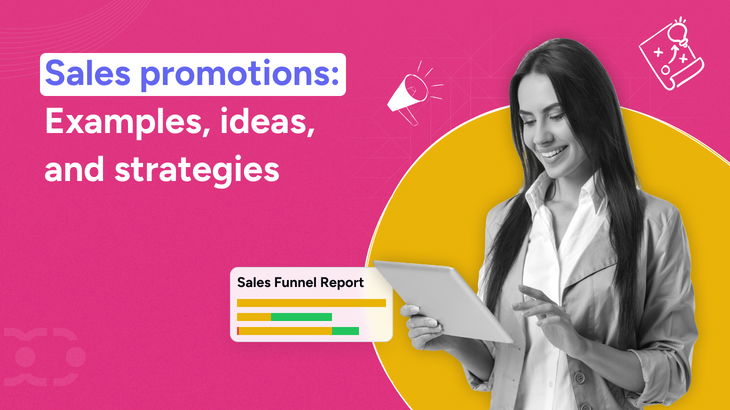
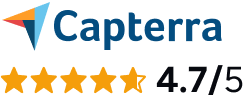
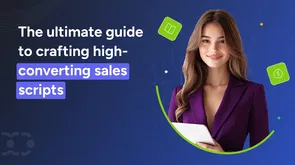
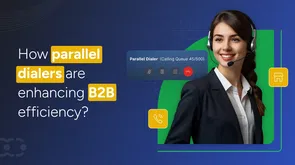
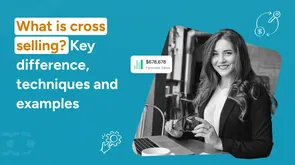
Key Takeaways
Do you remember the last time a 'buy one, get one free' deal caught your eye?
This is the outcome of a well-curated sales promotion offer—however, these promotions go beyond price slashing.
They're powerful strategies to transform how customers perceive your brand and drive massive sales.
And to get the sales promotion success, you must know how to build the campaign.
This blog dives into everything you need to know, from what sales promotion is to actionable ideas that deliver results.
Let's begin with the sales promotion definition.
What is sales promotion?
A sales promotion is a powerful technique marketers leverage to increase interest or demand for a product or service over a short period.
It includes tactics like birthday promotions, free trials, and limited-time free shipping offers to create a connection with customers and stimulate immediate purchases.
Unlike advertising, which seeks to build long-term brand awareness, sales promotions are designed to prompt immediate customer action.
A 2022 survey by Statista revealed that more than one-third (34%) of U.S. consumers preferred immediate percentage discounts as a promotional mechanism. Cash discounts ranked second, followed by free items for a given value.
These sales promotion techniques are of various forms, such as discounts, giveaways, contests, and more, all intended to encourage consumers or businesses to make quick purchasing decisions.
These techniques, when applied effectively, not only increase sales but also offer numerous business benefits.
Why sales promotions matter for your business?
Below are the most obvious reasons that persuade a business to run promotions:
Drive sales and revenue
Sales promotions are a quick way to boost revenue and clear inventory. For example, end-of-season sales make space for new stock and help retailers meet quarterly goals.
A well-executed consumer sales promotion like discounts or freebies can quickly attract new customers and drive sales.
Make product launches successful
A well-planned sales promotion can make a new product launch stand out. For instance, an introductory discount or free trial motivates potential customers to try it without any heavy sales pitch.
Create customer loyalty
Promotional tactics like loyalty programs or referral rewards show customers you value them.
A perfect example of this is Domino's 'Emergency Pizza' campaign, which gave its loyal customers a free pizza, building trust and encouraging repeat orders.
Maximize brand visibility
Promotional activities like year-end discounts and flash sales grab attention, especially when marketed on digital channels. These limited-time offers attract potential buyers and drive more traffic to your site.
Streamline inventory management
Promotional deals like “buy one, get one free” or "buy one, 20% & buy two 50%" are great tactics to move unsold products, trim inventory costs, and make room for new ones.
Apparel brands often slash prices by up to 70% during clearance sales to keep their shelves current. Other industries like electronics or home goods also use these tactics to manage seasonal stock efficiently.
Ultimately, sales promotions are essential for meeting business objectives while fostering strong customer relationships.
Different types of sales promotion campaigns that businesses can do
Sales promotions are as diverse as the businesses that use them. Let's break down the main types:
Note that deciding which sales promotion tactic works best for your product or service is an important step when planning a campaign.
Consumer promotions like coupons or free samples can help generate quick interest if you want to attract customers. Trade promotions, such as bulk discounts, work well for building strong relationships with retailers for building strong relationships with retailers.
Digital promotions, like flash sales or social media giveaways, are ideal for reaching your target audience online. In contrast, experiential promotions, like contests or pop-up events, are great for creating memorable experiences.
Aligning the promotion type with your goals ensures better results and helps meet market demand effectively.
Unlock the power of personalized marketing
Download Salesmate's free buyer persona template and craft campaigns that truly resonate with your audience.
Let's move to some of the best sales promotion examples run by top businesses.
10 Effective sales promotion examples to inspire your next campaign
Sales promotions are a powerful way to connect with your potential customers and achieve immediate results.
Whether you're aiming to clear inventory or attract new buyers, these 10 proven examples of sales promotion can help you get an idea of what successful campaigns look like:
1. Buy one, get one free (BOGO) offers
BOGO promotions are great to increase perceived value by offering a free item with a purchase. This strategy is highly effective for clearing inventory and driving immediate sales.
See how Kraft Heinz used BOGO offers to boost sales of under performing products, effectively clearing excess stock and reigniting their customer interest.
2. Flash sales
Flash sales offer like '10% or 25 Off with a countdown timer' capitalize on the fear of missing out (FOMO), compelling customers to act fast. Amazon’s Prime Day is a great example of flash sales, which generate massive demand with limited-time deals.
Here is a perfect example of a brand running a sales promotion with a FOMO element:
Such promotional campaigns work exceptionally well with eye-catching visuals and clear messaging, making them a go-to strategy for businesses aiming to clear inventory or drive impulse buys.
3. Referral bonuses
Referral bonuses encourage existing customers to bring in new buyers by offering rewards, such as discounts or freebies. This strategy leverages the trust between referrers and their network, leading to higher conversion rates.
Referral campaigns are part of effective sales promotion in marketing strategies, leveraging word-of-mouth to expand reach.
In the sales promotion example below, the reward, "Give $5, Get $5", motivates customers to share your brand with friends, expanding your reach while rewarding loyalty.
4. Seasonal promotions
Seasonal promotions leverage holiday or event-based buying behavior, like Black Friday or Christmas.
Limited-time discounts during these periods create urgency and align with consumer purchasing trends.
Here is an example showing Grammarly’s '55% Off' Black Friday campaign used time-limited discounts to encourage upgrades, generating significant sales by emphasizing savings and urgency.
5. Loyalty programs
Loyalty programs reward repeat customers with points, discounts, or exclusive perks, fostering long-term relationships.
LEGO’s Insiders program, for instance, engages customers by offering points for registering purchases, combining fun with value.
Such promotional marketing strategy encourage higher spending over time and help businesses maintain a loyal customer base.
6. Free samples or trials
Free samples or trials help customers experience your product risk-free, increasing their confidence to purchase. For example, cosmetics brands frequently offer free samples to encourage customers to try before committing.
Here is an example showing a hair care brand offering a free hair mist bundle with any purchase, introducing customers to complementary products, and boosting the likelihood of repeat purchases
7. Contests and giveaways
Contests and giveaways not only attract attention but also build community and excitement around your brand. Offering prizes like cash rewards or exclusive products motivates participation.
For instance, Eggo’s 'Waffle Off' contest invited customers to share creative recipe ideas for a chance to win $5,000.
The vibrant design and clear call to action created a sense of community and excitement while boosting brand engagement.
8. Cashback promotions
Cashback promotions offer customers a percentage of their purchase price back, appealing to deal-seeking shoppers. These promotions incentivize higher spending while enhancing customer satisfaction.
Look at Nike's cashback campaigns that reward loyal customers with savings, encouraging repeat purchases and brand loyalty.
9. Trade-in offers
Trade-in promotions encourage customers to exchange old products for credit toward new purchases, making upgrades more affordable and appealing.
For example, Apple’s trade-in program allows customers to trade in older devices for credit, reducing the cost of upgrading. This approach not only appeals to cost-conscious shoppers but also aligns with sustainability goals by promoting product recycling.
Here is what Apple's trade-in campaign looks like:
10. Charitable donations with purchases
Charitable donations tied to purchases align your brand with social values and foster customer goodwill. For example, Fashionista’s campaign donated 1% of every order to a local pet shelter for National Pet Day.
This heartfelt initiative resonated with socially conscious customers, inspiring them to contribute to a meaningful cause through their purchases.
These innovative sales promotion ideas can attract new customers, drive purchases, and foster long-term loyalty.
To ensure your campaigns deliver results, continue to the next section for a step-by-step guide on planning effective sales promotions.
Take your sales and marketing to the next level with Automation
Automate your workflows, marketing campaigns, and sales processes with Salesmate and watch your business grow faster.
How do you craft a sales promotion plan that delivers results?
If you've ever been drawn to a campaign, it likely combined personal relevance, perfect timing, and a compelling offer.
That's the power of well strategic sales promotion campaigns.
Let's begin learning the steps of powerful sales promotion planning:
1. Set clear goals and objectives
Start by defining your primary goals. Are you trying to drive immediate sales, clear inventory, attract new customers, or increase brand awareness?
Having specific and measurable objectives is critical.
For instance, instead of saying, "We want to increase sales," set a goal like, "We aim to boost sales by 20% in the next three weeks."
Such clarity of goals among your marketing team ensures you can track success effectively and stay focused.
Clear objectives are the foundation of any successful promotion. They provide direction and ensure efforts are aligned with business goals.
For example, if your objective is to boost sales by 20% in three weeks, this target helps measure success and maintain focus throughout the campaign.
2. Understand your audience
To ensure your sales promo idea will bring more business to your door, you need to understand the ICP (Ideal Customer Profile) and buyer persona. Further, segmenting your leads can help you build personalized and more targeted campaigns.
For example, discounts on baby products appeal to young parents, while free shipping attracts online shoppers across all demographics. Use tools like surveys and social media insights to identify motivations and craft targeted offers.
You can segment your target audience based on demographics, behavior, and preferences. Also, use tools like customer surveys, social media insights, and purchase data to understand what motivates your audience. This will help you craft offers that feel personal and relevant.
3. Pick a strategy: push, pull, or hybrid
Push sales promotion strategy: Incentivize retailers or distributors to stock your product with trade discounts or bonuses, driving higher distribution in B2B markets.
Pull sales promotion strategy: Target consumers with direct promotions like flash sales to create demand. For example, a 20% off flash sale on social media can generate buzz and attract immediate purchases.
Hybrid strategy: Combine push and pull strategies for maximum impact. For instance, offer distributors bonuses to stock a new product while running a consumer-facing BOGO promotion to accelerate demand.
Evaluate your product lifecycle when choosing your strategy. A pull strategy like free samples can work well for a new product, while an established product may benefit from a push strategy to maintain retailer loyalty.
4. Build your blueprint
Creating a detailed sales promotion plan ensures stress-free execution near the right occasions.
You can outline:
Timelines: Set clear start and end dates to create urgency.
Budget allocation: Funds to invest in advertising, discounts, or giveaways.
Channels: Key platforms to promote based on your audience's engagement insights.
Dyson's 30-day risk-free trial highlights the importance of thoughtful planning, expertly easing consumer concerns with easy returns and open communication, building trust, and boosting sales along the way!
5. Launch like a pro
Your promotion's success heavily depends on how it's presented to your target audience.
Here are some tips for crafting a sales promotion campaign:
Compelling messaging: Try the use of catchy and snappy headlines, urgency-inducing phrases ("Limited Time Offer"), and clear calls-to-action ("Shop Now").
Eye-catching visuals: A captivating design for ads, social media posts, or in-store signage can make your promotion stand out.
Multi-channel promotion: Try leveraging potential marketing channels like marketing, social media, SMS, and influencer partnerships to maximize reach.
Utilize technology: Implementing a sales incentive software can streamline reward distribution, track performance, and enhance engagement, making your promotions more effective.
Most importantly, you must test different promotional materials to optimize performance; for example, compare two ad designs to see which drives more clicks before scaling your campaign.
6. Track, tweak, and learn
When planning your sales promotion strategy, consider its potential impact on overall revenue. For example, during Black Friday 2024, retail sales in Australia rose by 0.8%, reflecting the power of a well-executed promotional campaign to boost sales significantly.
So, once your promotion is live, closely monitor its performance using key performance indicators (KPIs) like:
Post-campaign analysis is equally crucial; identify what worked and use these insights to refine future promotions, ensuring continuous improvement.
Use tools like Google Analytics and CRM (Customer Relationship Management) software to track and analyze campaign performance. Insights from each campaign help you build better strategies for future sales promotion activities.
Heading: Reach your audience on their favorite platforms
Subheading: With Salesmate, seamlessly connect with customers across channels and elevate your sales promotions.
Reach your audience on their favorite platforms
With Salesmate, seamlessly connect with customers across channels and elevate your sales promotions.
Conclusion
Sales promotion tactics are powerful enough to bring sudden spikes in your sales closing with lucrative offers on special occasions.
Crafting the message with a personal touch and executing it promptly will help achieve more successful results in sales promotion campaigns. Tools like CRM and marketing automation platforms help boost business sales with personalized messaging and timely delivery.
Try Salesmate CRM to deliver an omnichannel experience.
Frequently asked questions
What do you mean by sales promotion?
Sales promotions are great tools for marketers to drive more sales and boost revenue around holidays and seasonal changes.
What are the advantages and disadvantages of sales promotion?
Advantages of sales promotions include boosting sales, enhancing customer loyalty, and clearing out inventory. However, the disadvantages are their short-term focus, reduced profit margins, and the risk of brand devaluation due to over-promotion.
What is the most expensive type of sales promotion?
Experiential promotions, like pop-up events, trade shows, and large-scale giveaways, are among the most expensive. For example, hosting an event to demonstrate products requires logistics, staffing, and promotional materials, making it cost-intensive. Sampling campaigns also incur high production and distribution costs.
How can B2B sales promotion strategies differ from B2C?
B2B promotions focus on long-term relationships, including trade allowances, bulk discounts, and cooperative advertising. In contrast, B2C promotions target individual consumers with tactics like flash sales, loyalty programs, and contests to drive immediate purchases.
What are the top sales promotion techniques?
The most effective sales promotion techniques include:
Juhi Desai
Content WriterJuhi is a passionate writer and reader. She is working with the team of content creators at Salesmate. Always seeking to learn something new, Juhi has an optimistic approach towards life. When she is not writing you can find her with a book and a coffee by her side.